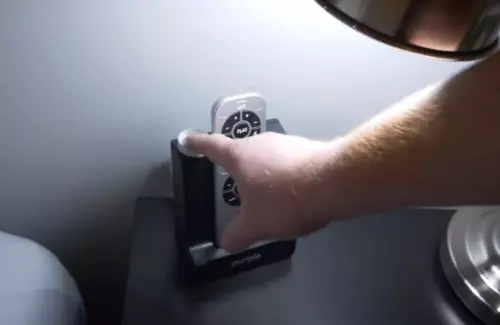For an automation system to work like a Swiss chronograph, it must be competently designed, suitable equipment must be selected, carefully assembled and professionally set up. But you need to start with the concept, that is, from the formulation of tasks and the choice of technical solutions.
By thinking through the functionality of the system in advance, you can at the initial stage provide details that will provide not just good, but excellent results. On the contrary, if you postpone elaboration of the concept “for later” and start designing a standard Smart House system without a clear understanding of its functionality, it may turn out that automation does not work the way you want it to, and many functions cannot be added. It is best to contact a Smart Home systems integrator in advance and develop a concept together with a specialist.
An experienced integrator will ask the right questions, will listen to you carefully and together you will work out the right option. Until you contact the specialists, here are some questions, answering them in advance, you can get the most information already during the first discussion of the Smart Home with the specialists.
Smart home Uncom, which provides high-quality services in Spanish Andalusia,cites statistics that the owners of smart homes save up to 30% in payments for communal services.
Questions to help you make the best choice for your smart home
- At what stage of renovation is your house/apartment?
The first question that will help determine the system of Smart home, this is at what stage of repair of your house or apartment. Is it possible to lay electrical cable for a home automation system? If the repairs are at an early stage, and it is possible to lay a cable, you should plan to install a wired system. If the repair is almost finished, the floor is poured, the walls and ceilings are covered, and all the electrics are already laid, then the Smart House system working on the radio bus is suitable for you.
- Design Project
This is not really a question, more of a recommendation. Already at the first request for a calculation of the Smart House system you should send the integrator a design project. A Smart House is an electrical control system, so in order to plan it, you need to know the number of rooms, the number of lighting groups, the number of air conditioners, radiators and other devices. All of this, as a rule, is in the design project. Having a design project, the integrator will be able to offer an adequate working system, which takes into account the parameters of your object.
- What functions will you need?
Think about what elements of the house you would like to integrate into the control system. Analyze your usual behavior in the house, imagine what could be simplified and made easier. Don’t try to think about the technical side of things (how to do it). Try to imagine the result – what you would like to get. Figuring out how to do it is the integrator’s job. A few questions to help with this:
- are there places where more than three switches are located?
- Are there remote controls that you use at the same time and can be combined?
- What would you like to control on a tablet or remotely?
- are there times when you want to control several devices (groups of lights, curtains, etc.) with “one button”?
- would you like to have the lights/air conditioning or heating turned on automatically in some cases?
- What kind of control panels would work for you?
This question seems secondary, after all the main thing in the automation system is functionality. Nevertheless the appearance of control panels and switches, along with functionality and price, is one of the main parameters by which to choose the system of Smart House.
There are open and closed protocols of Smart Home systems. In systems with an open protocol the choice of control panels is very large. It is possible to find the appropriate switches and control panels for any sophisticated and unusual interior. There are panels with Swarowski crystals as touch buttons, there are ultra-modern metal thermostats, there are glass sensors in all colors of the rainbow, as well as panels designed specifically for classic palace interiors. By choosing a closed system, you may find that the design options presented by the manufacturer don’t quite fit you.
- What budget are you willing to allocate for a smart home?
Answering this question beforehand you will be able to navigate through the offers of integrators and find the best ratio of functionality and design for you.
The cost of the Smart House system depends on the functionality, design of the control panels and the chosen brand. The Smart Home system of comfort class costs approximately 50-100 Euro per m2. Such a system does not include videomultiroom – video distribution system. The cost of systems with full functionality and with exclusive design elements can be significantly higher – Smart Home is a premium segment.
The cost of “Smart House” is significantly affected by the cost of equipment, which may depend largely on the brand (manufacturing company).
You should not forget that the cost of electrics, switches, thermostats, intercom system, audio and video equipment, that is the expenses, which will arise in any case, even if you refuse the Smart House. To compare offers of different integrators you should put aside such “non-core” expenses and take into account only the cost of Smart House equipment and the work on its implementation.
According to Statista, the number of smart speakers in the U.S. has doubled in the past 3 years.
Cost of installing a smart home per 1 sq.m.
The cost of installing a smart home depends on the many details that are taken into account in the preparation of an estimate by your contractor. However, we will try to answer the question about the average price of a smart home installation in a European country, based on the needs and whims of the customer.
If we make a gradation of complexity/comfortability of applying a smart home, we get 4 types of work and their cost (costs offered omitting VAT):
- €45-70 per sq.m. – minimum option, which includes only the control of lighting in the house/apartment;
- €70-100 per sq.m. – standard version, which is the most common among customers (lighting and heating/window blind control);
- €100-140 per sq.m. – a more advanced version of ordering a smart home system, which gives control over the main systems of the house, providing comfort at a high level. In most cases it will be the most convenient option for city apartments and small private houses (lighting, heating, window blinds/air conditioning).
- €140 per sq.m. – for special occasions and requirements smart home installation company can add additional options that will maximize your comfort, safety and satisfy even the most sophisticated whims (lighting, heating, a/c, window blinds + extras).
The offered rates cover the cost of the entire system (design, cabling, electrical switch cabinets, system devices, outlets, system start-up) without actuators (lamps, radiators, window blinds, and so on). The typically mentioned fantastic price differences in between systems in practice reach only approximately a few per cent, because each system has to consist of cabling (which is typically more costly than the devices itself), electric outlets, and so on, so the price various in the system devices themselves does not significantly influence the cost of the entire setup.
What devices do you need for a smart home?
Below we take a detailed and descriptive look at what devices are needed for a smart home.
The smart home controller
This is the “brain” of the smart home, which controls all the devices and allows you to create complex control scenarios, for example the controller can get information from the Internet about the time of sunrise and at that time open the blinds. Many components of a smart home can work without it, but then they will perform simpler functions and may not work as stably as with a controller.
Smart switches
Externally, they look like regular switches, only they work a little differently and have many more functions than regular switches.
Functions:
- Turning lights on/off with a single press (or a touch if a touch switch)
- Change light brightness (hold)
- Control different lighting groups or light scenarios. For example, a single press on the top of the switch will turn on all lights in the living room, two presses will dim the lights, and three presses will turn on only sconces or floor lamps. You can also set the hallway light switch so that a double tap on the bottom of the switch will turn on lights throughout the house.
- Control all functions through the app or by voice commands.
Smart outlets
Monitors voltage readings per outlet, will automatically turn off when a certain value is exceeded. Switch on/off via smartphone app from anywhere in the world where there is internet or by voice commands.
Heating and air conditioning control devices
Smart thermostat. Allows you to control the heating in your home, can automatically heat and cool your home according to a predetermined scenario.
To control the air conditioner there are devices that repeat set up so that the air conditioner thinks it is a remote control and listen to the commands of this device, which are given through the infra-red channel. But the device is controlled by you through the application or according to a set scenario, for example, when the window is opened conditioner is automatically switched off (for this purpose additional sensors are installed at the windows).
Additional functions of climatic devices for the smart house:
- Automatic climate control in each individual room;
- Temperature and humidity control with a message to the owner about sharp jumps in these indicators;
- Saving electricity in the absence of people in the room by turning off devices;
- Creating a certain air temperature before occupants return home;
- Setting the temperature mode via an app on a mobile device.
Smart lock
A smart lock is a lock for any door, which can be controlled through an app on your smartphone, control the position of the lock when you are away from home and check who and when it was used. If you have video intercom installed, then being far from your house you will be able to see who is calling and can open the door for the needed person.
Smart window and door sensors
With them you can not only control their position, but also create different scenarios, as we wrote above – the interaction of windows with air conditioning, the light can automatically turn on when you open the front door, the alarm is triggered.
Smart blinds
This is a fairly standard feature of the Smart Home arsenal, which can be configured according to a certain scenario, or directly through a mobile app.
Video surveillance
It will not surprise anybody any more with this device for the smart house, as many people use video observation for a long time, but it is all the same a component of the smart house. It is installed with motion sensors that distinguish between animals and people. The application configures different scenarios depending on the needs of the owner, for example, to start recording at any movement and immediately notify the owner with the broadcast picture on his smartphone.








